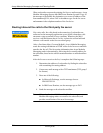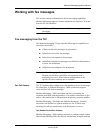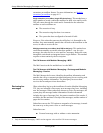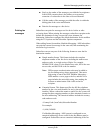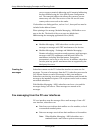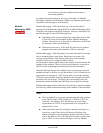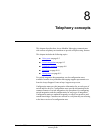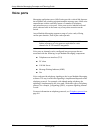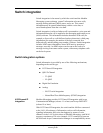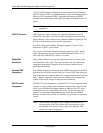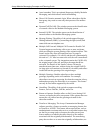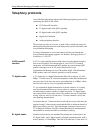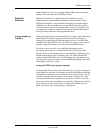
Avaya Modular Messaging Concepts and Planning Guide
8-2 November 2004
Avaya Modular Messaging Concepts and
Planning Guide
Voice ports
Messaging application server (MAS) units provide a critical link between
the telephone call switching equipment and the message store. MAS units
communicate with the switch by means of a number of telephone
end-points known as voice ports. Voice ports receive inbound calls and
place outbound calls in the same way as any other extension on the
switch.
Avaya Modular Messaging supports a range of voice cards, offering
various port densities, from 4-port cards upwards.
Note: H.323-based IP integration does not use voice ports. All
further references to voice ports are equivalent to voice
channels for H.323-based IP integration.
Voice ports or channels can be configured into port groups that are
associated with the following Avaya Modular Messaging components:
! Telephone user interface (TUI)
! PC client
! Call Me Server
! Message Waiting Indicator (MWI)
! Fax
Voice cards provide telephony signaling to the Avaya Modular Messaging
software. The way in which this signaling is implemented depends on the
telephony protocol. For example, with inband analog telephony, the
signaling is implemented in the voice path. With other types of telephony
protocol, for example, Q-Signaling (QSIG), a separate signaling channel
is used.
For more information on telephony protocols, see Telephony protocols
on
page 8-8.



